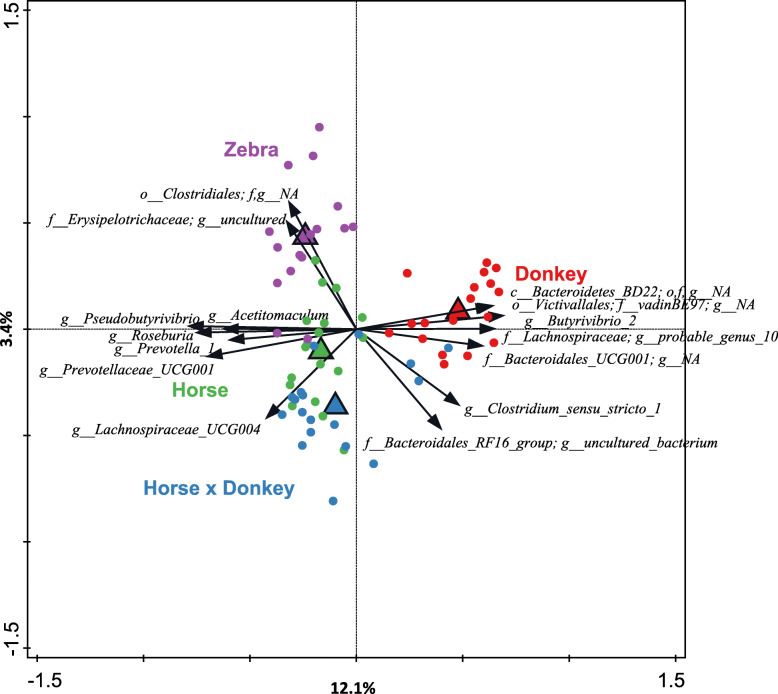Fig. 3.
Redundancy analysis triplot showing the relationship between the top fifteen prokaryotic genus-level phylogenetic groupings of the OTUs for which the variation is best explained by the constrained axes. Arrow length indicates the variance that can be explained by equine type, with the perpendicular distance of the equine types to the arrow indicating the relative abundance of the genus-level phylogenetic grouping. Arrow labels indicate the taxonomic affiliation of genus-level phylogenetic groups, with the level (i.e. class (c), order (o), family (f) or genus (g)) and taxon (as defined by the Silva 16S rRNA database) that the groups could be reliably assigned to. For example ‘g_Prevotella_1’ represents an OTU reliably assigned to the Prevotella_1 genus, whereas “c_Bacteroidetes_BD2–2; o,f,g_NA” was reliably assigned to the class Bacteroidetes_BD2–2 but the order, family and genus could not be annotated (NA). Triangular symbols indicate the equine type means and circle symbols the individual samples color coded by equine type. Equine type explained 18.3% of the total variation in the dataset, and the plot axis are labelled with the amount of this they represent.

